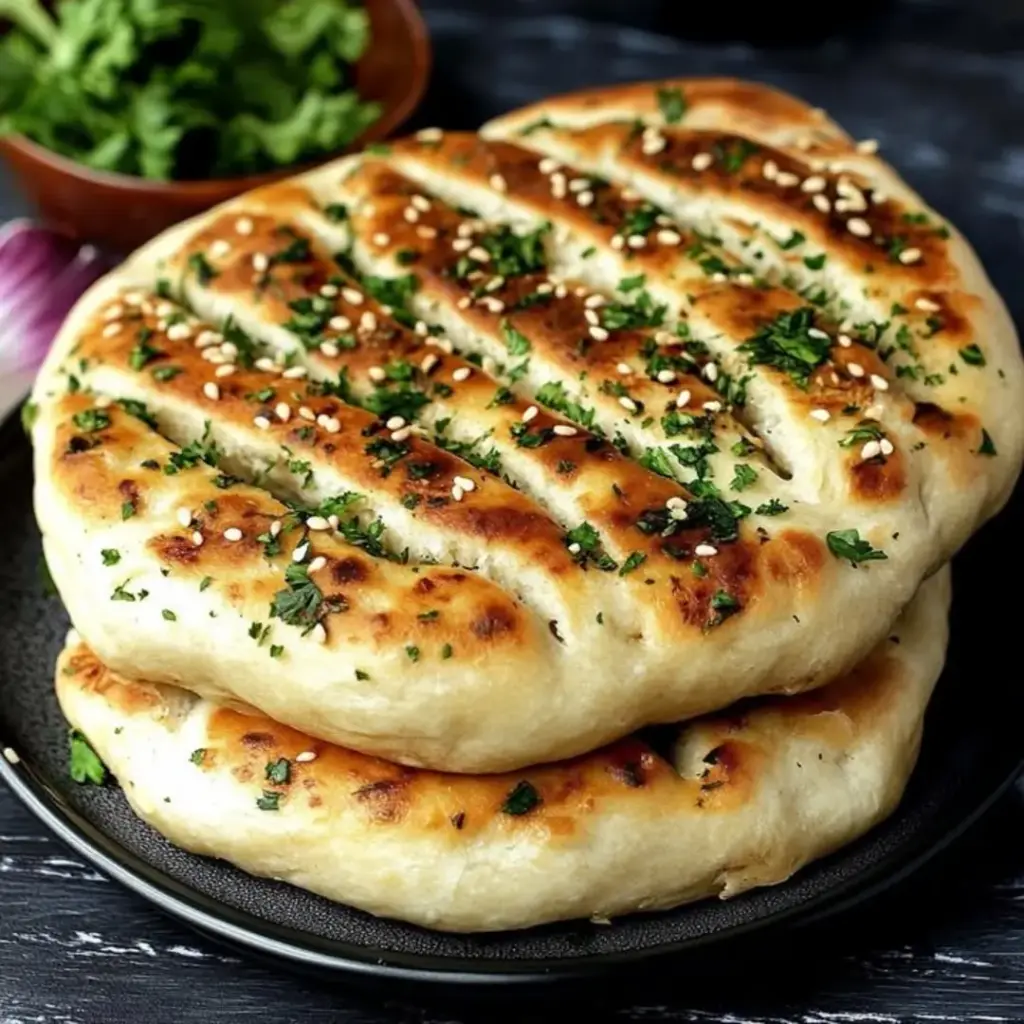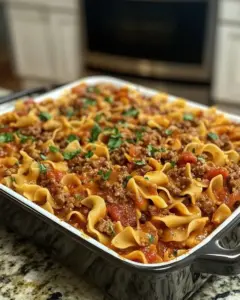Last Updated on 11/06/2025 by SAVORY DELIGHT RECIPES LLC
Introduction
Close your eyes for a moment and imagine the aroma of freshly baked bread, warm and inviting. Now, picture that bread, kissed with the nutty fragrance of sesame seeds, boasting a soft, chewy interior and a subtly crisp crust. That, my friends, is the magic of Vegan Turkish Flatbread with Sesame Seeds. This isn’t just a recipe; it’s an experience, a journey to the heart of Turkish culinary traditions made accessible for everyone. This ultimate guide will walk you through each step, ensuring your flatbread turns out perfectly every time. Get ready to elevate your baking game – the unforgettable flavor of authentic Turkish flatbread awaits!
Why You Will LOVE This Vegan Turkish Flatbread with Sesame Seeds Recipe
You’re going to fall head-over-heels for this Vegan Turkish Flatbread with Sesame Seeds recipe because it’s more than just bread; it’s a taste of culture, a burst of flavor, and a triumph of vegan baking! Here’s why:
- Incredibly soft and chewy texture: Forget dry, dense flatbreads! This recipe delivers a light, airy interior with a delightful chew that will keep you coming back for more.
- Surprisingly easy to make: Don’t be intimidated by the word “Turkish.” This recipe uses simple techniques and readily available ingredients, making it perfect for bakers of all skill levels.
- Versatile for any occasion: Whether you’re serving it alongside a hearty stew, using it as a pizza base, or simply enjoying it as a snack with hummus, this flatbread is incredibly versatile.
- Impressive flavor and aroma: The combination of sesame seeds, nigella seeds (optional), and warm bread dough creates an irresistible aroma and a flavor profile that is both nutty and slightly sweet.
- A healthier, plant-based alternative: Indulge in the deliciousness of Turkish flatbread without any animal products. This vegan version is just as satisfying and flavorful as the traditional recipe.
What Does It Taste Like?
Imagine sinking your teeth into a warm, freshly baked Vegan Turkish Flatbread with Sesame Seeds. The first thing you’ll notice is the soft, pillowy texture, giving way to a satisfying chew. The dough itself has a subtle sweetness, perfectly balanced by the nutty, toasty flavor of sesame seeds. A hint of olive oil adds a richness and depth, while the optional nigella seeds contribute a savory, slightly peppery note. The overall impression is one of warmth, comfort, and pure deliciousness. It’s a symphony of textures and flavors that will tantalize your taste buds and leave you craving more.
What Makes This Vegan Turkish Flatbread with Sesame Seeds Recipe Uniquely Irresistible & What Are The Hidden Nutritional Benefits?
Quick Prep & Pantry-Friendly Perks
One of the best things about this Vegan Turkish Flatbread with Sesame Seeds recipe is its simplicity. You likely already have most of the ingredients in your pantry! With just a few minutes of prep time to activate the yeast and mix the dough, you’ll be well on your way to enjoying fresh, homemade flatbread. The hands-on time is minimal, making it a fantastic option for busy weeknights or a relaxed weekend baking session.
Hidden Health/Nutrition Benefits
This Vegan Turkish Flatbread with Sesame Seeds offers some surprising nutritional benefits! The sesame seeds are a fantastic source of calcium and healthy fats, contributing to bone health and overall well-being. The bread flour provides complex carbohydrates, giving you sustained energy. Using plant-based milk also adds extra vitamins and minerals.
Main Ingredients: Your Key to Flavor Success!
- 4 cups bread flour
- 2 teaspoons active dry yeast
- 1 1/2 teaspoons salt
- 1 teaspoon sugar
- 1 1/4 cups warm water
- 1/2 cup unsweetened plant-based milk (like oat or almond)
- 2 tablespoons olive oil
- 2 tablespoons sesame seeds
- 1 tablespoon nigella seeds (optional)
Let’s delve deeper into some of the star players:
- Bread Flour: This is crucial for that perfect chewy texture. Bread flour has a higher protein content than all-purpose flour, which develops more gluten, resulting in a chewier, more elastic dough. Using all-purpose flour will still work, but the texture won’t be quite as satisfying.
- Active Dry Yeast: The heart and soul of our flatbread, active dry yeast is what makes the dough rise and become light and airy. Make sure your yeast is fresh to ensure proper activation.
- Sesame Seeds: These tiny seeds pack a powerful punch of flavor and add a delightful crunch to the flatbread. Using toasted sesame seeds will enhance the nutty flavor even further.
- Plant-Based Milk: Helps soften the dough and add flavor. Oat and Almond work well, but use your favorite.
Ingredient Swaps, Smart Substitutions & Flavorful Additions
Want to customize your Vegan Turkish Flatbread with Sesame Seeds? Here are a few ideas:
- Gluten-Free: Substitute the bread flour with a high-quality gluten-free all-purpose blend. You may need to add a binder like xanthan gum to help with the texture.
- Different Milk: Substitute the plant based milk for water if required.
- Sweetener: Use honey or maple syrup instead of the sugar.
- Herbs: Add fresh herbs like rosemary, thyme, or oregano to the dough for an herbaceous twist.
- Spice: Add a pinch of chili flakes or smoked paprika to the dough for a touch of heat.
Tools and Equipment Needed: Your Kitchen Arsenal
Here’s what you’ll need to bake your Vegan Turkish Flatbread with Sesame Seeds:
- Large Mixing Bowl: For mixing the dough.
- Measuring Cups and Spoons: For accurate ingredient measurements.
- Baking Sheet: To bake the flatbread on.
- Rolling Pin: To roll out the dough to the desired thickness.
- Clean Kitchen Towel: For covering the dough while it rises.
- Oven: To bake the flatbread.
Tap Showcase to grab the tools you need for this recipe—and every recipe you’ll love!
Don’t waste your time searching! Click the links above to get the perfect tools that will enhance your kitchen experience.
By using my affiliate link, you’ll enjoy exclusive discounts and quality guarantees. Why wait? Simplify every step of your cooking with the tools you need now!
Step-by-Step Instructions: Mastering Your Vegan Turkish Flatbread with Sesame Seeds!
- Activate the yeast: In a small bowl, combine warm water, sugar, and active dry yeast. Let it sit for 5-10 minutes until foamy. Why this works: This step ensures that your yeast is alive and active, which is essential for a successful rise.
- Combine dry ingredients: In a large mixing bowl, whisk together bread flour and salt.
- Add wet ingredients: Pour the yeast mixture, plant-based milk, and olive oil into the dry ingredients.
- Mix the dough: Use your hands or a stand mixer with a dough hook to mix until a shaggy dough forms.
- Knead the dough: Turn the dough out onto a lightly floured surface and knead for 8-10 minutes, until it becomes smooth and elastic. Pro Tip: If the dough is too sticky, add a tablespoon of flour at a time until it reaches the desired consistency.
- Let it rise: Place the dough in a lightly oiled bowl, turning to coat. Cover with a clean kitchen towel and let it rise in a warm place for 1-1.5 hours, or until doubled in size.
- Preheat the oven: Preheat your oven to 450°F (232°C).
- Divide the dough: Punch down the risen dough and divide it into 4-6 equal pieces, depending on the desired size of your flatbreads.
- Roll out the dough: On a lightly floured surface, roll out each piece of dough into an oval or round shape, about 1/4-inch thick.
- Sprinkle with seeds: Brush the surface of each flatbread with a little olive oil or water and sprinkle generously with sesame seeds and optional nigella seeds.
- Bake the flatbreads: Carefully transfer the flatbreads to a baking sheet and bake for 10-12 minutes, or until golden brown and slightly puffed up.
- Cool slightly: Let the flatbreads cool on a wire rack for a few minutes before serving.
Tips for Unbeatable Success: Secrets From Our Kitchen
Here are some pro tips to help you achieve flatbread perfection:
- Use fresh yeast: Always check the expiration date of your yeast. Fresh yeast is essential for a good rise.
- Don’t over-knead: Over-kneading can result in a tough flatbread. Knead until the dough is smooth and elastic, but not overly firm.
- Warm place for rising: A warm place is important to help the dough rise. An oven that’s been slightly warmed, then turned off, is ideal.
- Don’t overcrowd the baking sheet: bake in batches to ensure even cooking and browning.
- Adjust oven temperature: Ovens vary, so keep an eye on your flatbread and adjust the baking time or temperature as needed to prevent burning.
- Enjoy immediately: Freshly baked is best! This flatbread is most delicious when enjoyed warm, straight from the oven.
Assembly, Dazzling Presentation & Irresistible Serving Suggestions
Final Assembly & Presentation Ideas
There isn’t much assembly required, but here are a few ideas for presentation:
- Bruschetta Style: Top with freshly chopped tomatoes, basil, garlic, and a drizzle of balsamic glaze.
- Hummus and Veggies: Serve with a generous dollop of hummus and an assortment of colorful vegetables like cucumbers, carrots, and bell peppers.
- Grilled Flatbread: Grill the flatbread for a smoky flavor and serve as an accompaniment to grilled meats or vegetables.
- Pizza Base: Use the flatbread as a base for homemade pizzas, topping with your favorite sauces, cheeses, and toppings.
Suggested Sides, Drinks & Complements
- Hummus: A classic pairing, hummus adds a creamy and flavorful element.
- Baba Ghanoush: Another delicious Middle Eastern dip made from roasted eggplant.
- Greek Salad: A refreshing and vibrant salad with tomatoes, cucumbers, olives, and feta cheese.
- Turkish Coffee: A strong and flavorful coffee that is traditionally served after a meal.
Smart Storage & Efficient Preparation Tips
Storage Guidelines
Store leftover Vegan Turkish Flatbread with Sesame Seeds in an airtight container at room temperature for up to 2 days, or in the refrigerator for up to 5 days. For longer storage, you can freeze the flatbread for up to 2 months. Wrap each flatbread individually in plastic wrap or foil before freezing to prevent freezer burn.
Make-Ahead Prep Tips
- Prepare the dough in advance: You can make the dough the day before and store it in the refrigerator overnight. This will allow the flavors to develop even further.
- Toast the sesame seeds: Toast the sesame seeds ahead of time to save time on the day of baking.
Spectacular Recipe Variations: Beyond The Basics
Ready to get creative? Here are a few variations on the Vegan Turkish Flatbread with Sesame Seeds recipe:
- Garlic and Herb Flatbread: Add minced garlic and chopped fresh herbs like rosemary, thyme, or oregano to the dough for an herbaceous and aromatic twist.
- Spicy Chili Flatbread: Add a pinch of chili flakes or smoked paprika to the dough for a touch of heat.
- Olive and Sun-Dried Tomato Flatbread: Mix chopped olives and sun-dried tomatoes into the dough for a Mediterranean-inspired flavor.
- Sweet Cinnamon Flatbread: Add cinnamon and sugar to the dough for a sweet and comforting treat.
The Untold Story: History, Cultural Background & Recipe Trivia
Turkish flatbread, known locally as “pide,” has a rich history dating back centuries. It’s a staple food in Turkish cuisine, enjoyed in various forms throughout the country. The tradition of baking bread in communal ovens is still prevalent in many regions of Turkey. Sesame seeds, a key ingredient in this recipe, have been cultivated for thousands of years and are believed to have originated in Africa or Asia.
Complete Nutritional Information (Per Serving)
| Nutrient | Amount (Per Serving) |
|—|—|
| Calories | 250 |
| Protein | 8g |
| Carbohydrates | 45g |
| Fat | 5g |
| Fiber | 3g |
| Sodium | 350mg |
Answering Your Burning Questions: Vegan Turkish Flatbread with Sesame Seeds FAQs
- Can I use all-purpose flour instead of bread flour? Yes, but the texture will be slightly different. Bread flour has a higher protein content, which results in a chewier texture. All-purpose flour will still work, but the flatbread may be a bit softer.
- How do I know if my yeast is still good? To test your yeast, combine a teaspoon of yeast with a teaspoon of sugar in 1/4 cup of warm water. If the mixture becomes foamy within 5-10 minutes, your yeast is active and good to use.
- Can I freeze the flatbread? Yes, you can freeze these flatbreads for up to 2 months. Wrap them individually in plastic wrap or foil to prevent freezer burn.
- Why is my dough not rising? Several factors can affect the dough’s rising ability. Make sure your yeast is fresh, the water is warm but not too hot, and the room temperature is warm enough. Also, avoid adding too much flour, which can weigh down the dough.
- How do I stop my flatbread from burning? Keep an eye on your flatbread while baking and adjust the baking time or temperature as needed. You can also place a baking sheet on the rack below the flatbread to shield it from direct heat.
If You Adored This Vegan Turkish Flatbread with Sesame Seeds Extravaganza…
If you loved the experience of baking this Vegan Turkish Flatbread with Sesame Seeds, here are a few other recipes you might enjoy:
- Vegan Pizza Dough: Perfect for creating your own plant-based pizzas with endless topping possibilities. It utilizes similar dough-making techniques.
- Homemade Falafel: Enjoy these crispy chickpea fritters with your fresh flatbread and a dollop of tahini sauce for a Middle Eastern feast!
- Classic Beef Stroganoff over Egg Noodles: 3 Easy Steps - 20/07/2025
- Creamy Mushroom Chicken and Wild Rice Soup: 5 Easy Steps - 20/07/2025
- Creamy Cajun Chicken Pasta Soup: 5 Easy Steps! - 20/07/2025




